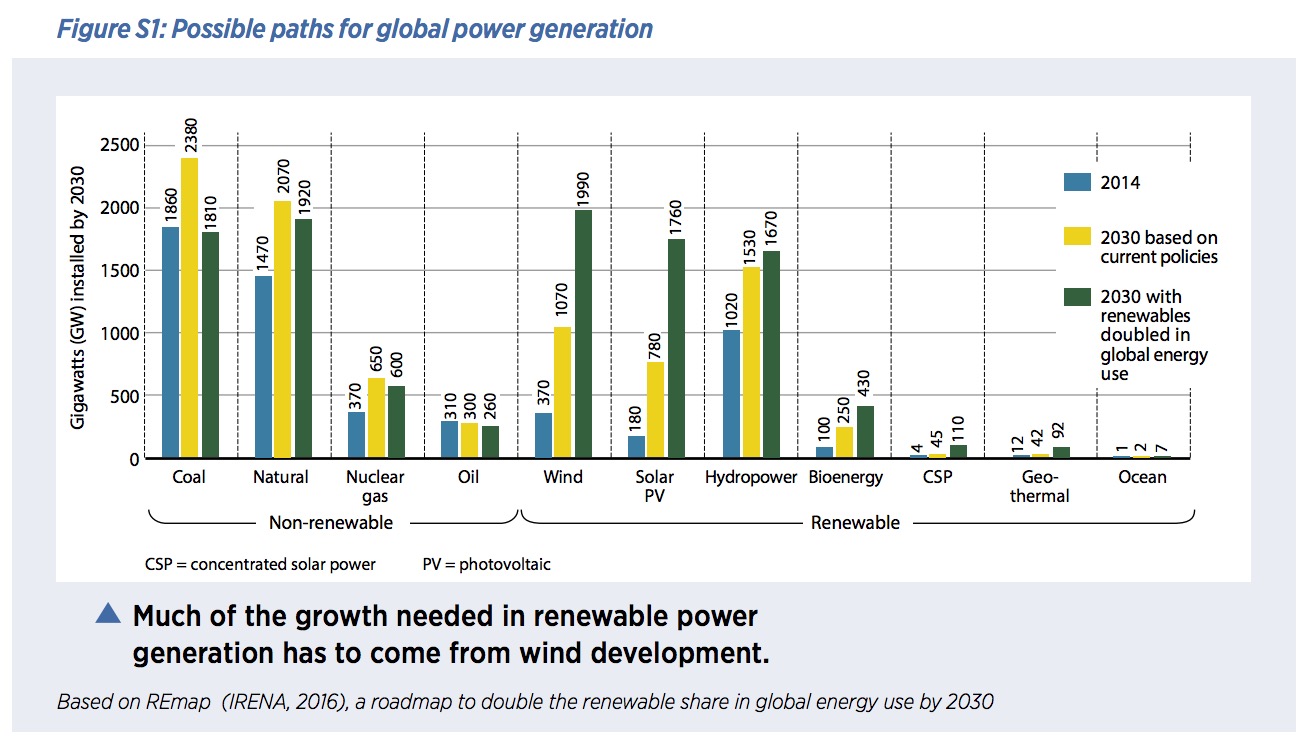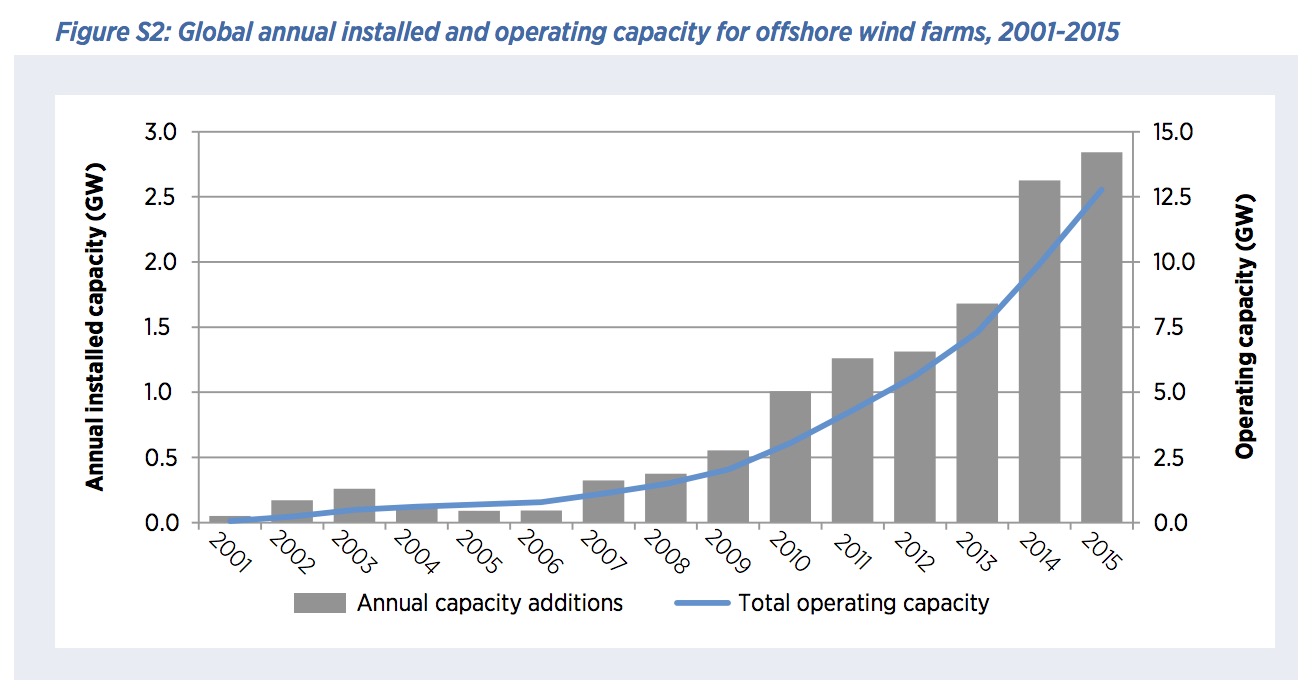INTERNATIONAL RENEWABLE ENERGY AGENCY
Summary for Policy Makers
The case for off shore wind
Off shore wind technology opens up sites with high wind resources. Off shore wind farms can be built quickly, at gigawatt-scale, close to densely populated coastal areas. This makes off shore wind an important addition to the portfolio of technologies to decarbonise the energy sector in a cost-effective manner.
Advances in wind power technologies continue to drive cost reduction and expansion into new markets. While onshore wind power is increasingly cost competitive against conventional power generation technologies, growing attention is being paid to technology development for off shore applications that open the door to sites with better wind resources. This combination of higher capacity factors and the availability of large-scale sites makes off shore wind an attractive alternative for utility-scale low-carbon electricity
Wind development is essential to decarbonise the global economy. According to IRENA’s analysis, wind power will have to become the leading power generation technology by 2030 to ensure a decarbonisation of the global economy. Off shore wind capacity can reach 100 gigawatts (GW) by 2030 as innovation continues as the industry takes shape. It could increase faster if policies were adopted to double renewables in the global energy mix. This ambitious decarbonisation pathway requires 1990 GW of total installed wind capacity by 2030, of which off shore wind would provide about 280 GW.
Innovation Outlook: Offshore Wind Technology aims to inform policy makers and other stakeholders about anticipated developments in the next three decades that will make off shore wind competitive on a large scale. The information in the report aims to help guide incentive programmes and policy actions supporting sustainable energy innovation.
A sector driven by technological innovation
Offshore wind has grown from a few megawatts of installed capacity to more than 12 gigawatts in barely 15 years.
The technology’s evolution started in 1991, when the first megawatt-scale offshore wind farm was commissioned in Denmark in shallow waters, close to shore, using turbines rated at only one-eighth of today’s largest turbines. The first commercial-scale offshore wind plant was commissioned in 2002, also in Denmark, with an installed capacity of 160 megawatts (MW). By the end of 2015, the world’s installed offshore wind capacity exceeded 12 GW, mainly off the coasts of Europe.
Offshore wind turbines are now the largest rotating machines on Earth. Developments in wind turbine technologies as well as in foundations, installation, access, operation and system integration have permitted moves into deeper waters, further from shore, to reach larger sites with better wind resources. Until 2007, offshore wind turbines were installed in water depths below 20 metres (m) and closer than 30 kilometres (km) from shore. Today, in contrast, turbines are being installed routinely in water depths up to 40 m and as far as 80 km from shore.
Download full version (PDF): Innovation Outlook – Offshore Wind
About the International Renewable Energy Agency (IRENA)
www.irena.org
The International Renewable Energy Agency (IRENA) is an intergovernmental organisation that supports countries in their transition to a sustainable energy future, and serves as the principal platform for international co-operation, a centre of excellence, and a repository of policy, technology, resource and fi nancial knowledge on renewable energy. IRENA promotes the widespread adoption and sustainable use of all forms of renewable energy, including bioenergy, geothermal, hydropower, ocean, solar and wind energy, in the pursuit of sustainable development, energy access, energy security and low-carbon economic growth and prosperity
Tags: International Renewable Energy Agency, IRENA, Offshore Wind, Renewables, Wind farms, Wind Power








 RSS Feed
RSS Feed